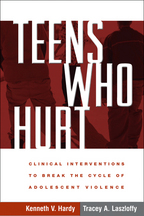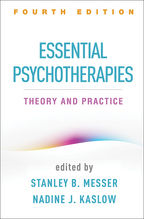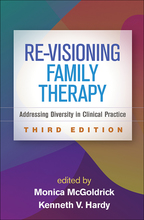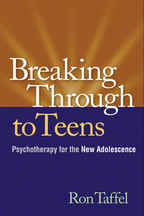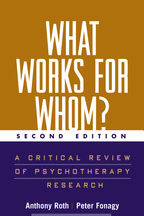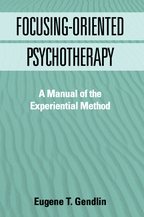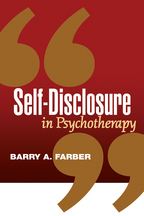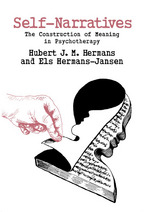Teens Who Hurt
Clinical Interventions to Break the Cycle of Adolescent Violence
Kenneth V. Hardy and Tracey A. Laszloffy
Paperbacke-bookprint + e-book
Paperback
orderOctober 23, 2006
ISBN 9781593854409
Price: $39.00280 Pages
Size: 6" x 9"
Copyright Date: 2005
“Hardy and Laszloffy have written an excellent book, clear and full of substance as one would expect from such well-respected authors....The first part of the book presents a model that describes the interplay of four critical factors that the authors believe increase the likelihood of a teen's becoming violent....The second part of the book presents the 'skills and strategies' that the authors have found useful, starting with general principles that we all recognize as necessary when working with adolescents, yet are also difficult to maintain, especially when rage is in the room....Poignant case examples are woven throughout the book....Teens Who Hurt is a substantial work that I highly recommend.”

—Journal of Marital and Family Therapy
“This book is a masterpiece! Hardy and Laszloffy present a timely, innovative treatment approach for violent youth and their families. Drawing from their wealth of clinical experience, the authors comprehensively review the individual and environmental factors that fuel violent behavior and offer practical treatment guidelines and interventions. Their high level of respect and compassion for at-risk youth is evident throughout the book. The pearls of wisdom offered here are far-reaching, and can serve as a blueprint for private practitioners, school counselors, and others working with adolescents in schools and the community.”

—Matthew D. Selekman, MSW, Partners for Collaborative Solutions, Evanston, Illinois
“Hardy and Laszloffy go beyond narrowly psychological explanations of youth violence to encompass the critical role played by the broader social environment. With sensitivity, compassion, and intelligence, they detail the many ways in which social toxins in an adolescent's environment poison well-being and stimulate violence. Their approach to intervention is well grounded in their conceptual analysis and should be required reading for any professional working with violent kids.”

—James Garbarino, PhD, Department of Human Development, Cornell University
“This book represents a giant step forward in the understanding of the psychological, familial, and sociocultural factors that contribute to adolescent violence. The authors present a crystal-clear model that explains why some adolescents become violent, and delineate specific, practical suggestions for reducing and preventing violence. This book is essential reading for all professionals who work with adolescents and would be an appropriate supplemental text for graduate-level courses in adolescent therapy.”

—Joseph A. Micucci, PhD, Department of Psychology, Chestnut Hill College
—Journal of Marital and Family Therapy
“This book is a masterpiece! Hardy and Laszloffy present a timely, innovative treatment approach for violent youth and their families. Drawing from their wealth of clinical experience, the authors comprehensively review the individual and environmental factors that fuel violent behavior and offer practical treatment guidelines and interventions. Their high level of respect and compassion for at-risk youth is evident throughout the book. The pearls of wisdom offered here are far-reaching, and can serve as a blueprint for private practitioners, school counselors, and others working with adolescents in schools and the community.”
—Matthew D. Selekman, MSW, Partners for Collaborative Solutions, Evanston, Illinois
“Hardy and Laszloffy go beyond narrowly psychological explanations of youth violence to encompass the critical role played by the broader social environment. With sensitivity, compassion, and intelligence, they detail the many ways in which social toxins in an adolescent's environment poison well-being and stimulate violence. Their approach to intervention is well grounded in their conceptual analysis and should be required reading for any professional working with violent kids.”
—James Garbarino, PhD, Department of Human Development, Cornell University
“This book represents a giant step forward in the understanding of the psychological, familial, and sociocultural factors that contribute to adolescent violence. The authors present a crystal-clear model that explains why some adolescents become violent, and delineate specific, practical suggestions for reducing and preventing violence. This book is essential reading for all professionals who work with adolescents and would be an appropriate supplemental text for graduate-level courses in adolescent therapy.”
—Joseph A. Micucci, PhD, Department of Psychology, Chestnut Hill College

